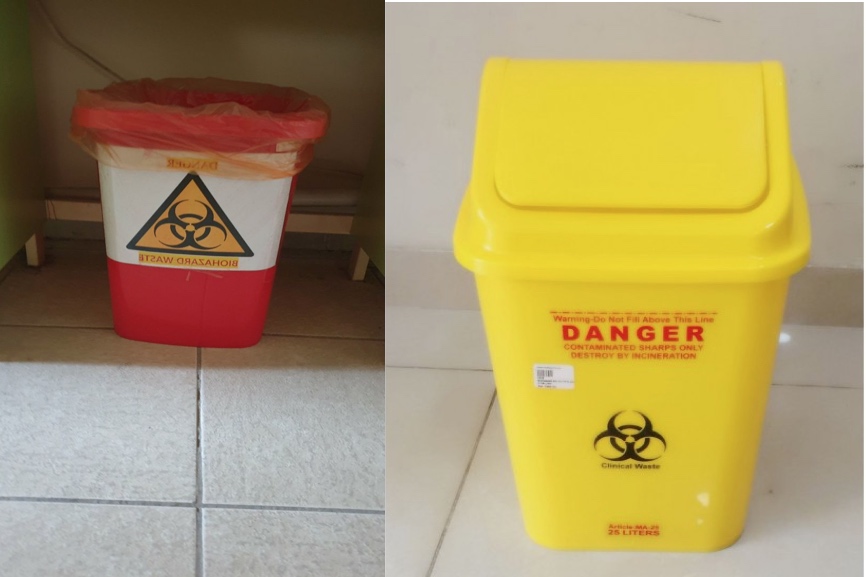Al-Bayan University has been keen on preserving the public health of the individual, society and the environment by spreading awareness among students, workers and the teaching staff for the need to classify the waste detachments that are produced in all laboratories in preparation for transporting them to the treatment site in accordance with health and environmental controls and mechanisms to maintain public safety and as stated among the recommendations of the visit of the ministerial team concerned with implementing the program of evaluating procedures and standards for biosecurity in laboratories and research centers according to the book of the Ministry of Higher Education and Scientific Research / Department of Private University Education / Administrative Division, issue (TH / Administrative / 338) in (12) \ 1 \ 2020).
The separated materials are received in the laboratories of all faculties in the university and periodically and are collected as follows:
- Chemical wastes (Waste products) in dark bottles and the materials on them are labeled with an adhesive mark in order to prepare them for the purpose of transferring them to the Department of Treatment and Destruction of Hazardous Chemical and Biological Waste / Ministry of Science and Technology.
- Biological waste, which includes (samples of serum or blood and saliva and various swabs, laboratory slides and syringes, in addition to pricking tools to take blood samples. They are collected in special containers in preparation for transportation to the incinerator.
- Samples and culture media for the growth of bacteria and they are destroyed weekly by collecting them in a bag and putting them in a wet pressure oven (Autoclave) for half an hour, then they are collected in specific containers for transfer to a special incinerator.
University activities in this field
- Conducting educational workshops and lectures for laboratory officials and the rest of the teaching staff on how to safely handle and sort hazardous waste according to global health controls.
- Training cleaning workers in the scientific branches and increasing their awareness regarding the type of waste, how to safely transport, and not mixing hazardous materials with materials and general waste.
- Increasing students’ awareness and setting indicative signs and guidance during practical application of the types of waste and correct sorting methods.
- Coordination with the Department of Treatment and Destruction of Hazardous Chemical and Biological Waste of the Ministry of Science and Technology.
- Provide waste containers bearing signs and yellow color
- Providing yellow and red containers with clear identification marks through color and writing to distinguish the substances that are hazardous to health and the environment from the rest of the materials and to facilitate sorting from the source.
- Providing distinctive opaque containers for temporary storage of hazardous wastes in preparation for transporting them to the treatment site in a periodic and safe manner.

